Namakaran Puja | Naming Ceremony
Perform Hassle-free Namakaran Puja or Naming Ceremony with best Vedic and experienced Pandits, Pujaris, Purohits, Panthulu or Vadhyars from PurePrayer.
You can book the Pandit or Purohit Online with Puja Samagri, suited for your traditions like Bengali, Bihari, Kannada, Maithili, Malayalam, Oriya (Odia), Madhwa, Smartha, Shaiva, Vaishnava Sri Vaishnava, Tamil, Telugu, Tulu and many more. PurePrayer provides for a
What is Namakaran Puja?
Namakaran is a traditional Hindu ritual of naming a newly born baby. In Sanskrit, ‘Nam’ refers to name and ‘Karan’ refers to create. The Namakaran Puja Ceremony is considered one of the most important samskaras out of the 16 rituals that celebrates the ‘rites of passage’.
Naming a newborn is performed using Vedic traditions and following the astrological instructions. The ceremony is generally performed 11 days after the child is born, however, the day may be decided by the priest as per the Birth-Chart of the child.
Some ancient texts also suggest, the naming ceremony should be performed on the first new moon or full moon day after the 10th day of the birth of the new-born.
Namakaran Puja Ceremony or the ‘Naming Ceremony’ formalizes the infant as an individual, who can now be accepted and can socialize with people around.
How to perform the Namakaran Puja Ceremony?
The parents of the infant start the Namakaran puja with pranayama, prayers and chanting Mantras in the presence of the priest and family. The priest starts the Pooja ceremony by performing Gauri Ganesh Puja, Kalash Puja, and Punyaha Vachanam, If the father is not present, the child’s uncle or grandfather can perform the ritual and take the place of the father during the ritual.
The priest performs the Pooja offering prayers to the Gods, Agni (God of Fire), the elements, and the spirits of the ancestors. On a gold, silver or bronze tray or a plate, rice grains are spread, and the father of the new-born writes the chosen name on the dish using a gold stick while chanting. The father then whispers the child’s name in its right ear repeating it as per traditions along with a prayer.
The ceremony is followed by the blessings of the elders and the astrologer presents the horoscope of the child. Additionally, a Graha Shanti Puja is performed in the name of the new-born child.
Namakaran Pooja Benefits
- Removal of Janana Dosha
- Improves health of the child
- Creating the identity for the child
- Brings positive vibes of the naming
- Brings in luck, fortune and prosperity
How is a name selected for Namakaran?
Sanskrit texts provide various divergent guidelines for parents when choosing a name for their child. A boy’s name is typically two or four syllables starting with a sonant, in the middle a semivowel and ending in a visarga. A girl’s name on the other hand is an odd number of syllables that end in a long ā or ī and easy to pronounce.
Names chosen are usually affiliated with Gods and Goddesses, birth star, virtues, place of birth, elements of nature and many more profound thoughts.
There are five general principles that are taken into consideration when choosing the initial letter of a child’s name as the initial letter is considered auspicious.
- Janma Nakshatra Naam (by lunar asterism, comprising of the birth star, the position of planets at the time and date of birth, and the moon sign);
- Maasa Naam (according to the child’s birth month);
- Devata Naam (after the family deity);
- Rashi Naam (according to the Gotra Pravartak
- Samsarik Naam (the worldly name), as an exception to all the above.
Traditionally, it is believed that when a male child is named, the name of the child should have letters in even numbers (2, 4, 6, 8) and a girl’s name should consist of odd numbers (3, 5, 7, 9). However, 11 is considered the best for both genders.
|
Naming a Baby According to Birth Star (Nakshatra) |
||
|---|---|---|
| Baby’s Birth Star (Nakshatra) | First Letter of Baby’s Name | |
| 1 | Aswini – अश्विनी – ಅಶ್ವಿನಿ | chu चु ಚು, che चे ಚೆ, cho चो ಚೊ, la ल ಲ |
| 2 | Bharani – भरणी – ಭರಣಿ | Li लि ಲಿ, lu लु ಲು, le ले ಲೆ, lo लो ಲೊ |
| 3 | Kritika – कृतिका – ಕೃತ್ತಿಕಾ | a अ ಅ, i इ ಇ, u उ ಉ, e ए ಎ |
| 4 | Rohini – रोहिणी – ರೋಹಿಣಿ | o ओ ಒ, va व ವ, vi वि ವಿ, vu वु ವು |
| 5 | Mrigashira – मृगशिरा – ಮೃಗಶಿರಾ | ve वे ವೆ, vo वो ವೊ, ka क ಕ, ki कि ಕಿ |
| 6 | Aardra – आर्द्रा – ಆರ್ದ್ರಾ | ku कु ಕು, Gha घ ಘ, ina ङ् ಙ, cha छ ಛ |
| 7 | Punarvasu – पुनर्वसु – ಪುನರ್ವಸು | ke के ಕೆ, ko को ಕೊ, ha ह ಹ, hi हि ಹಿ |
| 8 | Pushyami – पुष्यमी – ಪುಷ್ಯಮೀ | hu हु ಹು, he हे ಹೆ, ho हो ಹೊ, Da ड ಡ |
| 9 | Ashlesha – अश्लेशा – ಆಶ್ಲೇಷಾ | Di डि ಡಿ, Du डु ಡು, De डे ಡೆ, Do डो ಡೊ |
| 10 | Magha/Makha – मघा – ಮಖಾ | ma म ಮ, mi मि ಮಿ, mu मु ಮು, me मे ಮೆ |
| 11 | Poorva Phalguni पूर्व फल्गुनी ಪೂರ್ವಫಲ್ಗುಣೀ | mo मो ಮೊ, Ta ट ಟ, Ti टि ಟಿ, Tu टु ಟು |
| 12 | Uttaraphalguni उत्तर फल्गुनी ಉತ್ತರಫಲ್ಗುಣೀ | Te टे ಟೆ, To टो ಟೊ, pa प ಪ, pi पि ಪಿ |
| 13 | Hasta –हस्ता – ಹಸ್ತಾ | pu पु ಪು, Sha ष ಷ, Na ण ಣ, Tha ठ ಠ |
| 14 | Chitra – चित्रा – ಚಿತ್ತಾ | pe पे ಪೆ, po पो ಪೊ, ra र ರ, ri रि ರಿ |
| 15 | Swaati – स्वाती – ಸ್ವಾತೀ | ru रु ರು, re रे ರೆ, ro रो ರೊ, ta त ತ |
| 16 | Vishaakha – विशाखा – ವಿಶಾಖಾ | ti ति ತಿ, tu तु ತು, te ते ತೆ, to तो ತೊ |
| 17 | Anuraadha – अनुराधा – ಅನುರಾಧಾ | na न ನ, ni नि ನಿ, nu नु ನು, ne ने ನೆ |
| 18 | Jyeshtha – ज्येष्ठा – ಜ್ಯೇಷ್ಠಾ | no नो ನೊ, ya य ಯ, yi यि ಯಿ –, yu यु ಯು |
| 19 | Moola – मूला – ಮೂಲಾ | ye ये ಯೆ, yo यो ಯೊ, ba ब ಬ, bi बि ಬಿ |
| 20 | Poorvashaada – पूर्वाषाढ़ा – ಪೂರ್ವಾಷಾಢಾ | bu बु ಬು, dha ध ಧ, Ba भ ಭ, Dha ढ ಢ |
| 21 | Uttarashaada – उत्तराषाढ़ा – ಉತ್ತರಾಷಾಢಾ | be बे ಬೆ, bo बो ಬೊ, ja ज ಜ, ji जि ಜಿ |
| 22 | Shravan – श्रवणा – ಶ್ರವಣಾ | Si शि ಶಿ, Su शु ಶು, Se शे ಶೆ, So शो ಶೊ |
| 23 | Dhanishta – धनिष्ठा – ಧನಿಷ್ಠಾ | ga ग ಗ, gi गि ಗಿ, gu गु ಗು, ge गे ಗೆ |
| 24 | Shatabhisha – शतभिषा – ಶತಭಿಷಾ | go गो ಗೊ, sa स ಸ, si सि ಸಿ, su सु ಸು |
| 25 | Poorvabhadra – पूर्वभाद्र – ಪೂರ್ವಾಭಾದ್ರಪದ | se से ಸೆ, so सो ಸೊ, da द ದ, di दि ದಿ |
| 26 | Uttarabhadra –उत्तरभाद्र – ಉತ್ತರಭಾದ್ರಪದ | du दु ದು, Ka ख ಖ, Jha झ ಝ, tha थ ಥ |
| 27 | Revati – रेवती – ರೇವತೀ | de दे ದೆ, do दो ದೊ, ca च ಚ, ci चि ಚಿ |
Note: No differentiation to be made between Hrsva and Deerghakshar letters.
Puja Samagri For Namakaran
Havan Samagri
Havan Kund – 1, Til (Black – 250gms), Til (White – 250gms), Havan Samagri (500gms), Kali Urad (50gms), Yellow Mustard (50gms), Guggul (100gms), Sticks (3 to 5kgs), Samidha Bundle (5 bundles), Navgrah Sticks (1 Bundle), Wooden Spoons for Havan (2 pcs), Wooden bowls for Havan (2 bowls), Cow Dung Cakes (2 pcs), Abeer (50gms), Jau (100gms), Ghee (1 Kg), Kusha (1 bundle), Matchbox, Lotus Seeds (100 gms), Agar (50gms), Jatamansi (50gms), Shuchi – 1, Shruva – 1, Dron (1 bundle)
Puja Kit
Agarbatti (1 pkt), Ashtagandh (25gms), Jenau (1 roll), Akshat (200gms), Attar (1 small bottle), Barley / Jau (100gms), Camphor (Bhimsaini) (100gms), Cardamom (50gms), Cloves (50gms), Cotton Wick (20 wicks), Dhoop (1pkt), Dry fruits (250gms), Gangajal (250ml), Ghee (1kg), Haldi Akkha (200gms), Honey (1 small bottle), Jaggery (200gms), Kumkum (1 pkt), Kusha (1 bundle), Mauli (1 roll), Moong (500gms), Supari – Big (15 pcs), Wheat (1 kg), Nariyal (fresh) (3 pcs), Nariyal (dry) (1 pcs), Gulal (1 pkt), Abeer (50 gms), Khopra (1 pcs), Rose Water (1 small bottle), Sugar, Yellow Mustard (50gms), Rangoli
Red, White & Yellow Cloth, White Thread bundle, Fruits, Sweets
Flowers
Mixed Flowers, Durva, Tulsi, Bel Patra, Rose, Veni, Garlands, Paan Leaves, Mango Leaves
Puja Utensils
Copper Kalash, Copper Plates, Panchpatra Set, Akhand Diya, Thali, Brass Bowls, Spoons, Cloth (Red, Yellow, Green, Black, White, Pink), Dhoti, Saree, Colors (Red, Green, Black, Yellow), Panch Aarti, Bell, Agarbatti Stand, Dhoop Stand, Abhishek Pot
Panchamrit
Milk, Curd, Ghee, Honey, Sugar/Jaggery
PurePrayer is India’s best online puja platform and an Official Partner for Govt. Of Karnataka for Online Pujas and Sevas bookings in Muzrai Temples. PurePrayer offers best Pandits in Bangalore services for your home and office Puja needs. Our Pandits are Multi lingual and proficient in Puja- Vidhis ascribed in Grihya Sutras.
Frequently Asked Questions About Namakaran Pooja
Why is Namakaran Puja Ceremony performed?
Namakaran ceremony is performed to bless the child with good fortune, good health, and luck and success in life.
When should Namakaran Puja Ceremony be performed?
Namakaran Puja is performed 11 days after the birth of the child, or any auspicious day as chosen by the priest. It should however be done before the child turn one year old.
Which day is best to perform Namakaran Puja Ceremony?
As the Hindu calendar, the auspicious days and Tithis to perform the ceremony are Chaturthi, Navami and Chaturdashi.
The best days to perform Namakaran Puja is Monday, Wednesday, Thursday, and Friday.
The best Nakshatra for the Namakaran ceremony are Ashwini, Swati, Satabishak, Revati, Chitra, Pushya, Mrigashirsha, Hasta, Anuradha, Rohini, Uttara Phalguni, Uttara Bhadrapada, Uttara Ashadha, and Shravan.
What is Namakaran Puja Ceremony Procedure?
On the day of the ritual, the infant is bathed and dressed in new clothes. A new is selected by the infants’ parents and is announced.
Perform Hassle-free Namakaran Puja Ceremony with best Vedic and experienced Pandits, Pujaris, Purohits, Panthulu or Vadhyars from PurePrayer.

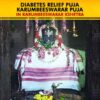
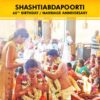
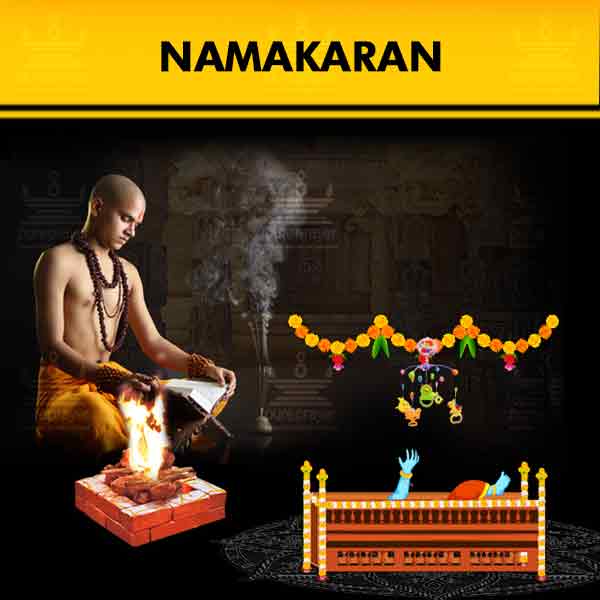

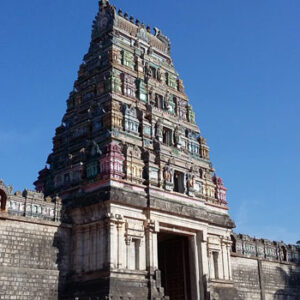

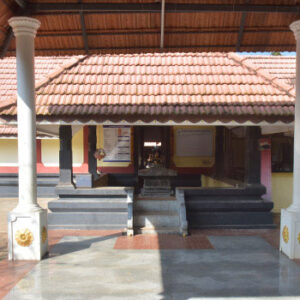
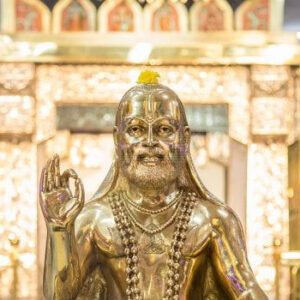
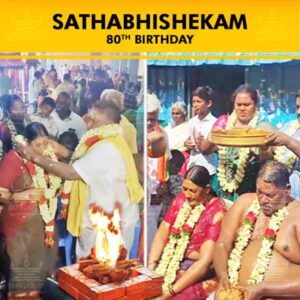
Reviews
There are no reviews yet.